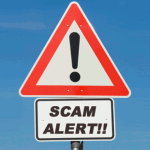In a recent trip to China, we came across a shop that specialises in
the sale and distribution of real jade. They shared with us some of the
simple trips to determine if a piece of jade is real or fake.
The first test is a “destructive test” to verify that the piece of stone in your hand has the hardness of a real jade. Jade is divided into 2 major groups, jadeites and nephrite. Jadeites has a solid texture and hardness degree of 6 (out of 10 for diamonds). In particular, the rare and expensive green jade may have a hardness degree of 8 or 9, equivalent to sapphire/ruby, aquamarine, spinel and topaz. Due to this hardness degree, Jadeites are invulnerable to steel cutting tools made of carbonrundum or diamond power and is hence more valuable. On the physical appearance, the green jade has a smooth, lustrous, glittering, translucent surface, and comes with almost invisible grains.
Nephrites, on the other hand, has about 6 – 7 or lower in hardness, can easily be cut and their commercial values are much lower than jadeites.
The second test is the feel. Real jade feels cold to the touch. In a test, the shopkeeper placed a piece of jade below his shirt and used a lighter to burn the other side. The shirt did not change color or turn yellowish. We tried on our shirt and it works the same. The jade transferred the heat away so effectively as to prevent the shirt from burning. As this test is not well documented, we do not recommend that you try this out.
Thirdly, is the sound. If you use a coin or glass to knock the jade gently, it will create a high pitch “Ting” sound which distinguishes it from marble. However, this test is not easy to identify real jade from other cheaper material.
Lastly, place the jade under a bright light and notice that it is transparent with thin shreds of “smoke” inside, which is the minerals. And in a real jade, there should not be any bubbles. If you see bubbles under the light, the piece of “gemstone” in your hand is worthless and is likely to be glass.
We hope that the above information is good enough for you to ensure that you pay for what you get. Don’t be scammed, especially when you travel in Asia. There are many street vendors who will entice you into buying “cheap” gemstones. There is a reason for the price of everything, and normally tourists are unaware of such scams. We would expect the larger gemstone shops where the tourist guide brings you, are selling the genuine jade. But it would not harm you if you know more. Surprise the shopkeepers!









